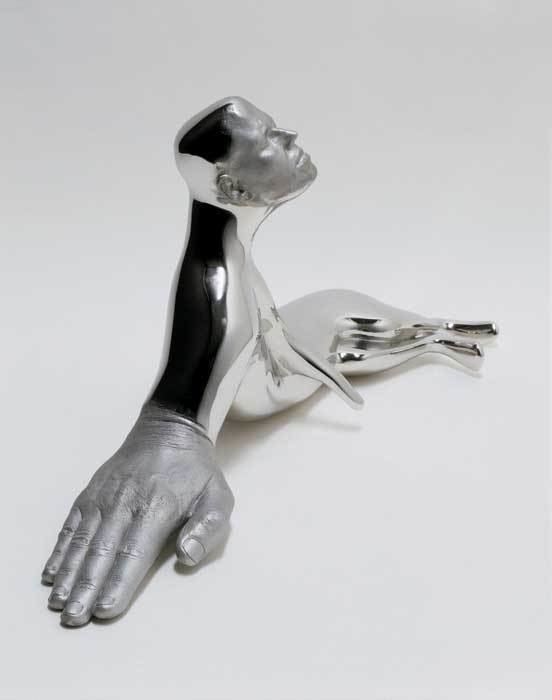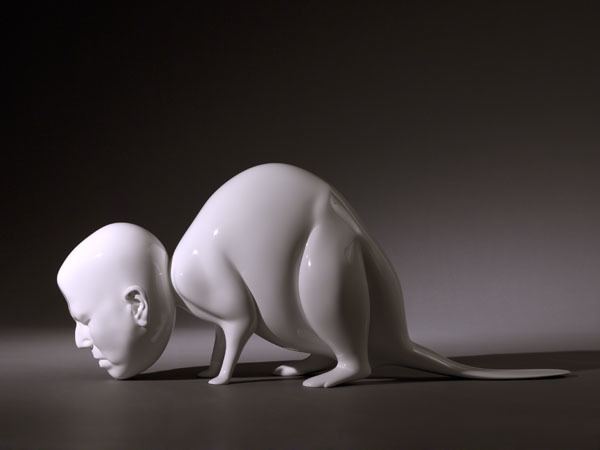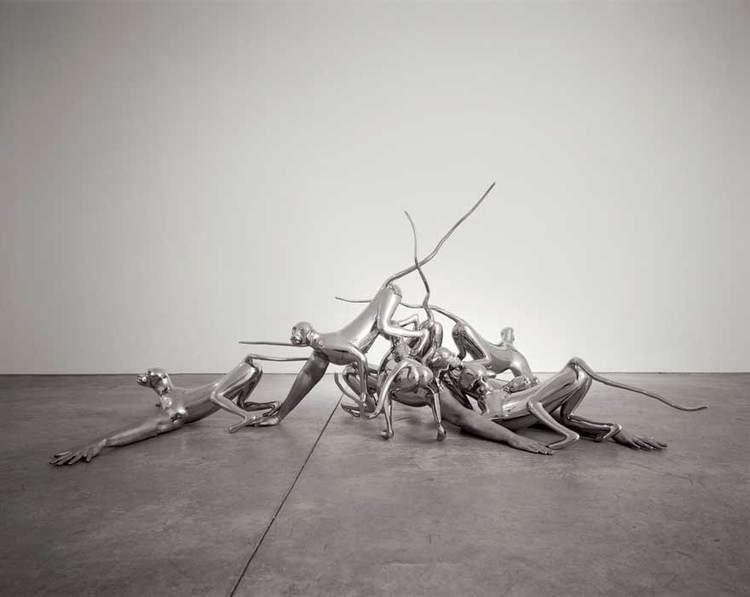Name Rona Pondick | ||
 | ||
Awards Guggenheim Fellowship for Creative Arts, US & Canada | ||
Education Yale School of Art (1977) | ||
The artist project rona pondick
Rona Pondick (born April 18, 1952) is an American sculptor. She lives and works in New York City. Using the language of the body in her sculpture, in both a literal and a metaphorical sense, has been of interest to Pondick since the beginnings of her career in 1977. An abiding concern of hers has been the exploration of the use of different materials, a consistent motif that runs throughout her work from its beginnings to the present day.
Contents
- The artist project rona pondick
- Ava wright interview with rona pondick
- Life
- Early Work Fragments
- Hybrid Sculptures AnimalsFlora and the Body
- Hybrid Sculptures Trees and the Body
- Artists Technique
- Awards and Grants
- Solo Museum Exhibitions
- International Museum Exhibitions
- Museum Collections
- References

Ava wright interview with rona pondick
Life

Raised in Brooklyn, New York, Rona Pondick earned her Bachelor of Fine Arts from Queens College in New York in 1974. She earned a Master of Fine Arts in 1977 from Yale University School of Art in New Haven, Connecticut, where she studied sculpture with David Von Schlegell, an American sculptor, and also studied with Richard Serra, who was a visiting artist in the program at the time.

Pondick began to exhibit in galleries and museums in the mid 1980s, and since that time her sculpture and site-specific installations have been shown in exhibitions throughout the world. Her work can be divided into two stylistic periods: early work based on fragments that reference the human body, and later work centered around the human body as part of hybrid sculptures, merged with forms from nature of flora and fauna.
Early Work: Fragments

Beginning with work from the early 1980s, Pondick has worked with fragments that invoke the body, including shoes, baby bottles, and teeth, “a quirky vocabulary of anatomical parts and body related objects that had some of Louise Bourgeois' oddity and near-surrealism and Philip Guston’s poignant, ambiguous symbolism.” These early provocative works have included scatological references in bodily assemblages. Her early work has been interpreted by critics in numerous ways, as a feminist critique of Freudian theories of sexuality, as an expression of infantile and juvenile desires, and as “Freudian vaudeville acts designed to make you laugh until you feel something caught in your throat.”
Her earliest sculptures are unmistakably scatalogical. From the late 1980s to early 1990s, Pondick made sculptures of beds using pillows, cloth, and wood, some with baby bottles strapped to them with rope.
Hybrid Sculptures: Animals/Flora and the Body

Beginning in 1998, Pondick began to make sculptures that merged parts of animals and flora with those of her own body, primarily casting them in bronze or stainless steel. Pondick merged traditional hand modeling with computer technology in order to create these hybrid sculptures, which incorporate depictions of her own head and hands. For example, in her first work in the series, Dog (1998-2001), she combined a human head and hands with the body of a dog, creating a sphinx-like figure. Other human-animal hybrids include Cat, Otter, Muskrat. Monkeys, and Ram's Head. As Pondick stated, "I use the animal form because it is recognizable and holds its scale no matter where you put it."
Hybrid Sculptures: Trees and the Body
In 1995, Pondick made her first sculpture of a tree using fruit scattered on the ground that incorporated human teeth. Her first tree/human hybrid sculpture incorporated the artist’s miniaturized head as buds in the tree branches, using aluminum, bronze, and stainless steel. Her first tree/human hybrid sculpture was Pussy Willow Tree in 2001, commissioned by Fondation pour l’art contemporain Claudine et Jean-Marc Salomon in Annecy, France. This was followed by Cranbrook Art Museum’s commission of Crimson Queen Maple in 2003, and by Head in Tree, commissioned by Sonsbeek International in 2008 and installed in the center of a pond.
Artist's Technique
In her sculpture, Pondick has always used traditional methods such as carving, hand-modeling, mold-making, and metal casting, and at times, has used the latest in 3D computer technologies occasionally for modeling but largely for scaling. This results in a mystery in the process and it is often hard to discern how these objects are made.
Awards and Grants
Solo Museum Exhibitions
This list includes material from Landau, Stoops, Van Der Zijpp, Weiermair, and Zaya.
International Museum Exhibitions
Pondick's work has been included in international exhibitions including the Lyon, Venice, and Johannesburg Biennales, the Whitney Biennial, and Sonsbeek.
Museum Collections
Pondick's work is represented in museum collections including The Allen Memorial Art Museum at Oberlin College, The Brooklyn Museum, The Carnegie Museum of Art, Centre Georges Pompidou, Cleveland Museum of Art, The DeCordova Museum and Sculpture Park, The Fogg Art Museum/Harvard Art Museums, The High Museum of Art, The Los Angeles County Museum of Art (LACMA), The Metropolitan Museum of Art, The Museum of Contemporary Art, Los Angeles, The Museum of Modern Art, The Morgan Library and Museum, The National Gallery of Art, The New Orleans Museum of Art, The New York Public Library, The Rose Art Museum, The Toledo Museum of Art, The Whitney Museum, and The Worcester Art Museum.
